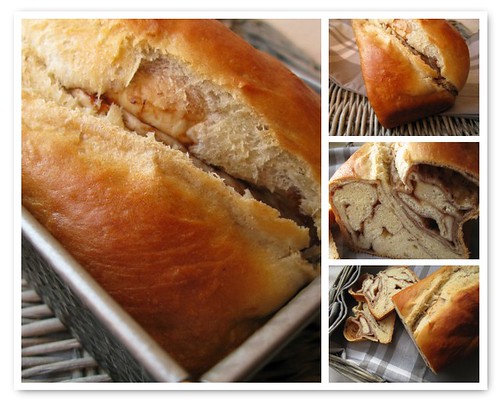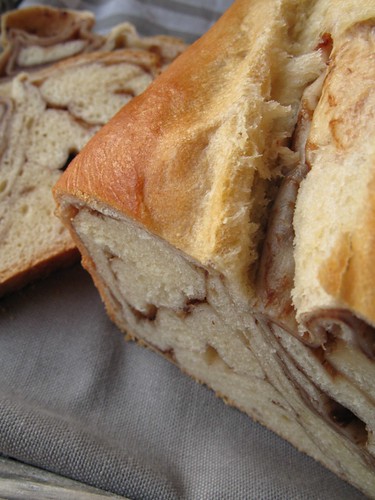Es ist mal wieder soweit, Halloween steht vor der Tür. Nur mache ich mir überhaupt nichts aus Halloween, denn ich bin der Meinung man muss nicht jeden Feiertag eines anderes Landes übernehmen, nur weil man nicht genug eigene hat ... Kulinarisch sehe ich es natürlich etwas anders, und mir ist jede Gelegenheit recht, neue Rezept auszuprobieren. Als ich nun die Gelegenheit hatte, an gleich zwei Cupcake-Backwettbewerben teilzunehmen, konnte ich nicht widerstehen. Ob ich Lust habe? Aber sicher - nur Zeit ... eher weniger. Gerade weil ich wieder einmal arbeiten musste und erst wieder in letzter Minute darauf stieß. Einmal hatte mich Maria von Ich bin dann mal kurz in der Küche. eingeladen, und auch der nächste BackAthon stand vor der Tür. Also blieb mir nichts anderes übrig, als meinen Lieblingscupcake (Schoki mit Chai) mit einer grusligen Halloween-Dekoration zu kombinieren. Als Frosting musste es unbedingt etwas mir Kürbis sein, denn das passte sowohl zum Motto als auch zur Jahreszeit. Das Karamel konnte ich leider aus Dekorationsgründen nicht so üppig benutzen, aber wer es besonders süß mag, kann seine Cupcakes auch gerne damit füllen.
Daring Bakers October Challenge: Povitica
The Daring Baker’s October 2011 challenge was Povitica, hosted by Jenni of The Gingered Whisk. Povitica is a traditional Eastern European Dessert Bread that is as lovely to look at as it is to eat!
Povitica (pronounced po-va-teet-sa) is traditional Eastern European dessert bread that is traditionally served during the holiday season. It is also known as Nutroll, Potica, Kalachi, Strudia, just to name a few. Family recipes, and the secrets on how to roll the bread so thin, was passed down through generations of families.The traditional filling for this bread is an English walnut filling, but other typical fillings also include apple/cinnamon, apricot preserves, and a sweet cheese (like cream cheese).
Spontaneously I remembered a bread I baked long time ago, during my study time, for a 'Polish evening' with some Polish students. It was a recipe from a Polish cookbook and called "poppy seeds strudel". I guess it was one of the traditional recipes mentioned above - and I liked it a lot. So I started this challenge enthusiasticly - and I went nuts (a little bit).
I used the half batch recipe and made the first two small loaves for a birthday brunch we had, and filled one with butter, sugar and sinnamon and the other with my favourite selfmade strawberry & lime jam (with a whole glas of the asset of my last ressorts). The second batch I made for a family get-together with coffee and cake, and the fillings were the traditional nut filling (which was prefered by ma sister-in-law) and a poppy seed & curd cheese filling (which was prefered by my brother and my parents).
I found out that the leftovers were the right thing for my sweet tooth. Slice for slice was wandering into my lunchbox every day ... I think I got addicted and have to make a bunch every week, so thanks for this great recipe!
Daring Cooks October Challenge: Moo Shu Pork
The October Daring Cooks' Challenge was hosted by Shelley of C Mom Cook and her sister Ruth of The Crafts of Mommyhood. They challenged us to bring a taste of the East into our home kitchens by making our own Moo Shu, including thin pancakes, stir fry and sauce.
"Simply put, Moo Shu is a stir fry, containing thinly sliced or shredded vegetables, meat (traditionally) and scrambled egg. It is usually served on flat, thin, steamed pancakes, and is accompanied by a complementary sauce.
Moo Shu pork (the protein most commonly used in Moo Shu dishes) originates in Northern China (commonly attributed to the Shandong province, though sometimes attributed to Beijing), rising in popularity in Chinese restaurants in the West in the 1960's and 70's. As the dish became more popular, different restaurants adapted the recipe to meet their own styles, or to accommodate for expensive or hard-to find ingredients, so there is a lot of variation among recipes. Common among them, though, is a basis of cabbage and the inclusion of scrambled eggs."
The challenge recipe provided for the Moo Shu filling comes from The Chinese Kitchen by Deh-Ta Hsiung. The pancake recipe comes from the same source, adapted from a variety of online demonstrations. The sauce recipe provided is from epicurian.com.
This is a really great & quick recipe - my pancakes landed in a zipper bag and followed me to work, where they were heated into a microwave oven and eaten with lots of joy. I had some leftovers, which I ate with some rice the day after.
This is a really great & quick recipe - my pancakes landed in a zipper bag and followed me to work, where they were heated into a microwave oven and eaten with lots of joy. I had some leftovers, which I ate with some rice the day after.
Buchteln (alias Dampfnudeln) mit Pflaumenmusfüllung
Die Tage werden kürzer, das Wetter stürmischer und kälter, also genau richtig, um drinnen zu bleiben, die dicken Socken hervorzukramen und sich mit warmen Speisen zu verwöhnen. Das folgende Gericht ist einfach perfekt dazu - zwar habe ich es im heißesten Sommer gekocht und fotografiert (bei 28°C mache auch nur ich den Herd an ...), aber beim Anblick läuft mir schon wieder das Wasser im Mund zusammen. Hier in der Region sind Buchteln zwar als Dampfnudeln bekannt - zumindest wies es so immer der Essensplan der Schulspeisung aus - aber es ist die selbe Bezeichnung für eine ursprünglich aus dem Böhmischen stammende Mehlspeise. Mein Rezept ist aus einer Ausgabe der A la Carte "Das süße Wien" - einem Magazin welches ich bei meinem Besuch in Wien unbedingt kaufen musste. Wer sonst, wenn nicht die Wiener, verstehen sich auf solchen Süßkram am besten ... Ich habe noch eine Pflaumenmusfüllung 'ergänzt', aber es geht sicherlich auch jede andere Marmelade, wer möchte kann sie aber auch ganz 'pur' herstellen. Mit dem gemeinen Germknödel, der hier zu Lande in den Supermärkten feilgeboten wird, hat die Buchtel aber nichts zu tun, den der reichhaltige buttrige Teiggeschmack lässt sich gar nicht mit den geschmacklosen Luftschwämmen vergleichen ...
Abonnieren
Posts (Atom)






